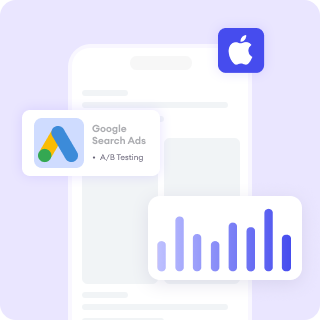You’ve worked hard to acquire users for your app so what is the next step?
Well, the real measure of success isn’t just how many people download your app, but how many users will stick around. This is what we call User Retention.
User Retention is the ability to keep your users coming back to your app over time. It’s one of the most critical indicators of your app’s value, longevity, and overall success. Apps that excel in retention build loyal user bases, which means consistent engagement, better word-of-mouth, and higher revenue potential.
Learn what are the key metrics for User Retention, such as Retention Rate and Churn Rate, and why they matter.
Why is User Retention Important?
Retaining users is essential because it:
- Maximizes Lifetime Value (LTV): Long-term users contribute more to your app’s revenue through purchases, subscriptions, or ad interactions.
- Reduces Acquisition Costs: Acquiring new users can be expensive. Retaining existing users costs less and delivers better ROI.
- Improves App Store Rankings: Apps with high retention rates are more likely to rank higher, as platforms like the App Store and Google Play factor retention into their algorithms.
Ultimately, retention isn’t just about keeping users but it also involves making sure that they continue to find value in your app.
Key Metrics for User Retention
To measure and improve retention, start by focusing on two essential metrics:
1. Retention Rate
Retention Rate measures the percentage of users who return to your app after a specific period. It’s the simplest way to track how well your app retains its users over time.
A high retention rate shows that users find your app useful, engaging, and worth returning to. It identifies loyal users and helps you track how many users remain active after the initial download. Retention rates are also a strong predictor of user lifetime value (LTV) and overall app growth.
How to Calculate Retention Rate:
Retention Rate (%) =(Number of Active Users on a Specific Day/Number of Users Who Installed the App) X 100
If 1,000 people downloaded your app on Day 1 and 300 of them returned to use it on Day 7, your Day 7 Retention Rate would be:
Retention Rate=(300/1000)×100=30%
How to Improve Retention Rate:
- Onboarding Experience: Make the first few minutes seamless and valuable to encourage users to stick around.
- Push Notifications: Remind users of updates, milestones, or offers to keep them engaged.
- Personalization: Tailor the app experience to individual user preferences to make it more relevant.
- Regular Updates: Add new features and content to keep the app fresh and exciting.
2. Churn Rate
Churn Rate is the opposite of retention. It measures the percentage of users who stop using your app over a specific period. High churn indicates that users are uninstalling or abandoning your app, signaling potential issues and a rising churn rate often points to problems with user experience, content, or value delivery.
Users who churn don’t contribute to long-term revenue, making churn a key focus for subscription-based or ad-driven apps.
How to Calculate Churn Rate:
Churn Rate (%) = (Number of Users Who Left During a Period/Number of Users at the Start of the Period) X 100
If you started the month with 5,000 users and 1,000 of them stopped using your app by the end of the month, your Monthly Churn Rate would be:
Churn Rate=(1000/5000)×100=20%
How to Reduce Churn Rate:
- Fix Pain Points: Use user feedback and analytics to identify where users are dropping off and improve those areas.
- Engage Inactive Users: Reach out to users who haven’t returned in a while with personalized offers or updates.
- Deliver Consistent Value: Ensure your app continuously meets users’ needs, whether it’s through new features, improved content, or better performance.
- Analyze the Competition: Understand what similar apps offer and adapt your features or pricing strategy accordingly.
The Relationship Between Retention and Churn
Retention and churn are two sides of the same coin. If you’re improving your retention rate, you’re naturally reducing your churn rate and vice versa. For example:
- A high retention rate (e.g., 60%) means fewer users are leaving your app (low churn).
- A high churn rate (e.g., 40%) suggests you need to work on keeping users engaged to boost retention.
By tracking both metrics over time, you can get a clear picture of your app’s performance and take actionable steps to improve.
Best Practices to Boost User Retention
To keep users coming back and reduce churn, consider these strategies:
- Onboard Effectively: Guide new users through your app’s features to ensure they understand its value.
- Engage Consistently: Use email campaigns, notifications, or in-app messages to keep users informed and interested.
- Personalize the Experience: Use data to customize content, recommendations, or offers for each user.
- Analyze User Behavior: Track where users spend the most time and where they drop off to refine your app.
- Provide Support: Offer responsive customer service to resolve user issues quickly.
Final Thoughts
User Retention is the key to sustainable app growth. Metrics like Retention Rate and Churn Rate provide essential insights into how well your app is meeting users’ needs and what you can do to improve. Make sure to keep your user retention in check when evaluating the app performance.
Improve your app and website performance with FoxAdvert!
If you are looking forward to how to improve your app performance, our professional team of ASO and App Marketer experts at FoxAdvert can help you. Contact us today to start your journey 😊











